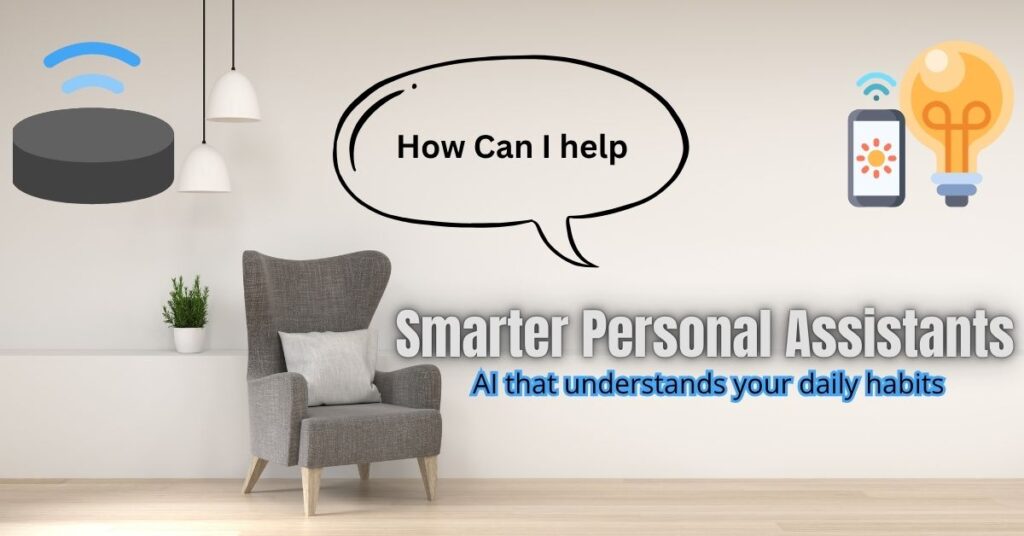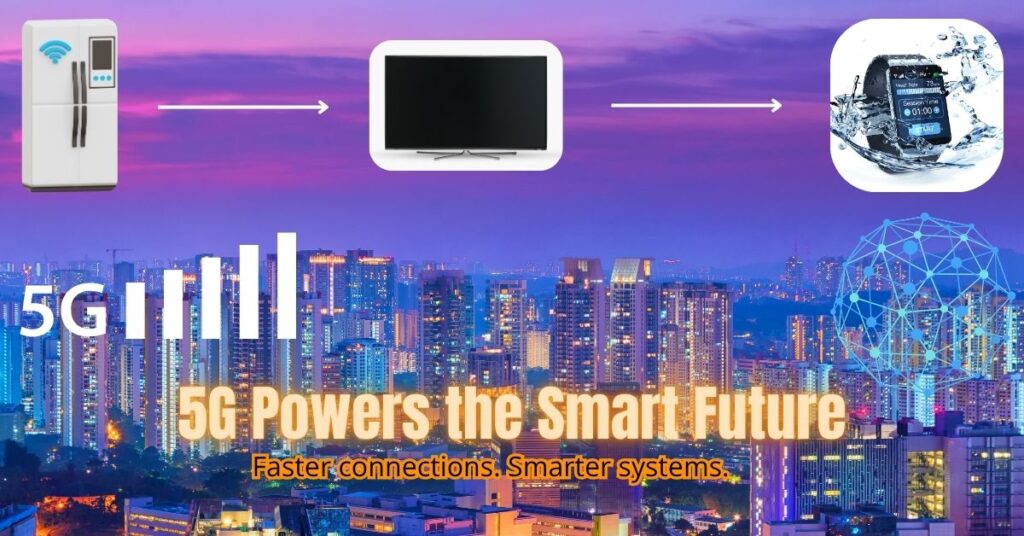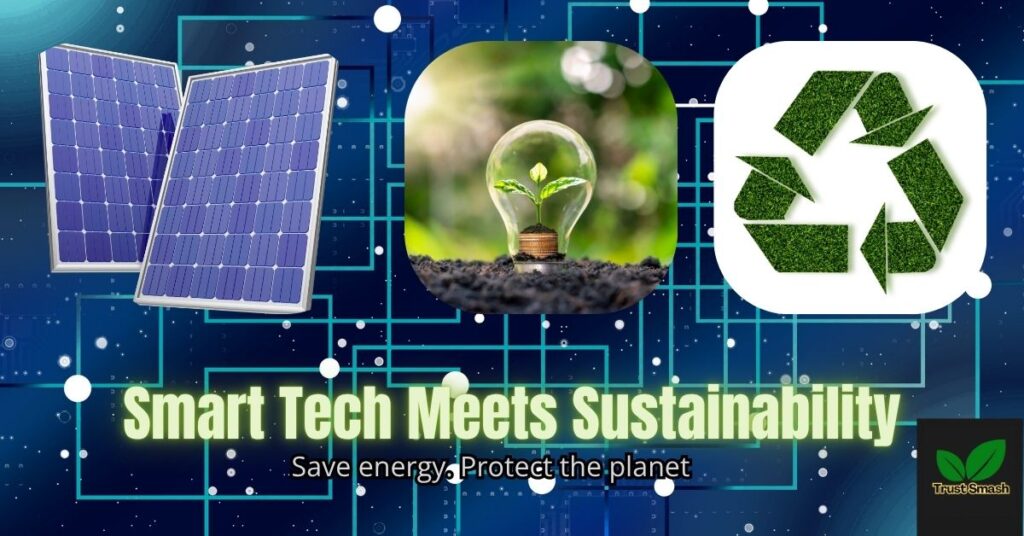Table of Contents
Introduction: Future Trends in Smart Devices
Smart technology is developing at the speed of electricity.
From basic gadgets to advanced home ecosystems, we have seen an incredible jump in a few years. Being informed about future trends in smart devices is now necessary for technical lovers, creators, and businesses.
This is not just about what is hot now – where we are moving forward.
The Rise of AI-Integrated Devices

Smarter Personal Assistants and Home Devices
Voice assistants such as Alexa, Google Assistant, and Siri are intensifying with AI integration.
They no longer answer – they understand your habits, references, and voice patterns. Your smart lights, thermostat, and equipment can now be automatically adapted to your daily routine.
This is the future smart home in action- a stronghold, spontaneous, and in-depth individual.
Predictive and Proactive Functionality
AI has become active due to its reactivity.
Your equipment can now predict your requirements – when you can adjust the temperature before asking, or when you are low, you can be reminded of grocery items.
This type of active smart behavior reflects current and future trends in technology, where automation becomes an everyday assistant.
AI Ethics and Data Privacy
Holy tech also means that more personal data is being used.
This brings important concerns about privacy. Are your habits private? Is your equipment safe?
As the future of smart devices comes out, it is important to select brands that prioritize data protection and transparent privacy policies.
Integration of IoT and 5G Connectivity

The Expansion of IoT Ecosystems
Smart homes, smart cities, and even smart factories also use IOT to work efficiently. This spontaneous control reflects the future of smart manufacturing and how interconnected systems are re-shaping industries.
5G’s Role in Accelerating Performance
5G gives this change fuel power. This enables communication from electric-teji between the devices with a minimum delay. This is why it is important for innovations such as self-driving cars, real-time health monitors, and future smart home devices.
Rapid network means rapid decisions – and intelligent consequences.
Challenges and Compatibility
Every tech leap has its obstacles.
The 5G rollout takes time. Not all devices play well together. Increased connectivity can increase safety issues.
Smart moves? Buy the technology prepared for the future that supports new standards you are not left behind when the upgrade roll is out.
Wearable Technology: Advancing Health and Fitness
Next-Gen Wearables with Advanced Sensors
Today’s wearables are full of powerful health equipment.
From tracking to ECG monitoring, brands such as Fitbit and Apple Watch are setting new standards in personal health techniques.
This is where the future of smart devices meets the future of welfare – users control their health in real time.
Integration with Healthcare Systems
Smartwatch now works directly with healthcare providers.
Through the telehaalth platforms, your doctor can monitor the symptoms and make quick decisions – without the need for physical travel.
It indicates the current and future trends in progress technology that prefer user convenience and active care.
Market Growth and User Awareness
Conscious consumers towards health are making a major increase in wearable technology.
But before purchasing, ask: Is your health data safe? Check the encryption standards and read the fine print to ensure your privacy is preserved.
Sustainability and Eco-Friendly Innovations

Energy-Efficient Smart Devices
The push toward sustainability is shaping trends in smart home technology.
Modern devices are built to consume less power. Some use solar energy. Others, like learning thermostats, help reduce energy bills and environmental impact.
Eco-smart is the new smart.
Circular Economy and Recycling Programs
Brands are focusing on reducing e-waste.
Many now offer trade-in programs, refurbish old products, or build modular devices that can be upgraded over time.
Supporting these efforts contributes to future smart home technology that’s both innovative and responsible.
Your Role in Sustainability
Every option matters.
Recycle your old gadgets. Choose modular and energy-efficient technology. Look for brands that are repairing more than being disposable.
The users’ small steps make major changes in the industry.
Future Design and User Experience Trends
Minimalist and Modular Designs
The future is smooth and flexible.
Expect equipment with clean lines and modular parts – the phone where you can swap a camera, or a smartwatch where you add health sensors.
This trend gives users more power over how their equipment develops
Enhanced and Immersive Interaction
Smart tech is becoming more comfortable.
Promotional reality (AR), virtual reality (VR), and haptic feedback feel more human. Imagine smart glasses that give directions or identify objects as well as move through the world.
This is the future of smart devices– interactive, emergent, and skilled.
Inclusive and Accessible Tech
Smart devices should serve everyone.
Today’s developers are designed for all users- voice navigation, screen readers, and adaptive controls. The inclusive design expands access to access and unlocks new ideas.
How does this innovation increase, including more voices and approaches?
Conclusion: A Smarter, Greener, More Connected Future
From AI-operated assistants to energy-saving devices, future trends in smart devices show a clear path.
The equipment will think for you, protect your data, help you stay healthy, and reduce your environmental impact.
If you want to ride this wave of innovation, focus:
- Privacy and data security
- Connectivity is ready for the future
- Continuous and modular design
The future smart home technology we are building today is more than the facility – it is about creating a better, safer, and more connected world.
To reach such valuable information, you have to go to our website – it is possible that you can find some good content there, which you are looking for.
FAQS[Frequented asked questions]
-
What is the future trend in IoT?
The future of IOT focuses on AI integration, increased safety, and smart devices in industries.
-
What is the future of smart home technology?
Future smart homes will include AI-operated automation, voice control, and energy-skilled equipment that learn user habits
-
What is the future of IoT in 2025?
By 2025, IoT will drive smarter cities, real-time healthcare monitoring, and hyper-connected industrial systems.
-
What is the future of devices?
The devices are developing more and more intelligence, portability, and integration with clouds and edge computing technologies.